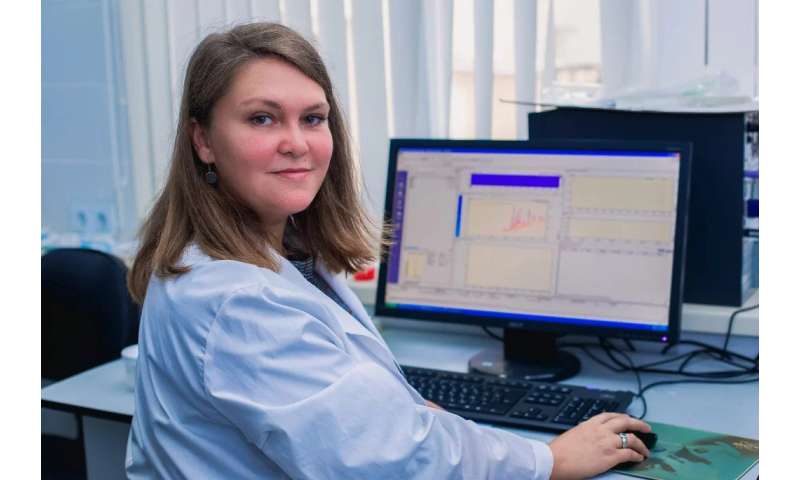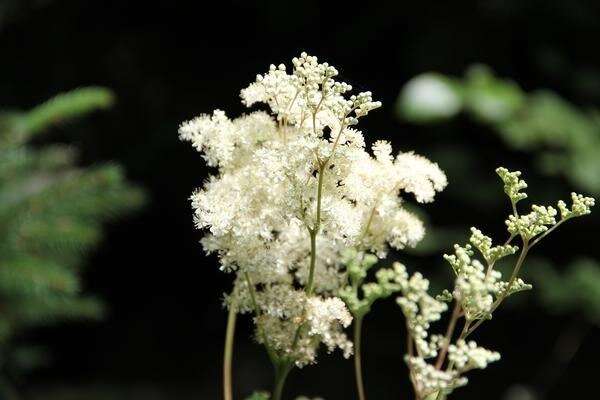Scientists made new discoveries in the field of distribution of bioactive substances and antioxidant activity of meadows

Scientists showed that chemical compounds of perennial plant meadowsweet are distributed unevenly. They found out that in new leaves chemically active compounds are stored, and in the old ones—predecessors of polymers that don't take part in any chemical reactions. Moreover, researchers show that flowers and fruits of meadowsweet possess distinct antioxidant effects. Complex of antioxidant molecules prevents forming of free radicals and so the destruction of cells. Understanding of character of distribution and storage of bioactive substances in the meadowsweet enables in future to optimize the processes of extraction and hasten creation of medicinal drugs. The results of the research are published in peer-reviewed, open access journal "Molecules."
Meadowsweet (Filipendula ulmaria) is a perennial medical plant that is used in traditional medicine and pharmacology. Thus from XVI-XVII centuries meadowsweet has been used for treatment of inflammatory diseases. Moreover, extracts, tinctures and creams on its base were used for treatment of arthritis, pneumonia, flu, headaches, intestine issues. It is accepted that medical properties of meadowsweet are caused by bioactive phenol compounds, with alcohol in their base, that contains the ring of carbons. Complex of such compounds includes phenol acids, flavonoids and tanning agents. However, the distribution of these compounds throughout various organs of a plant is poorly studied, that hinders the practical usage of meadowsweet in the modern pharmacy and medicine.
Researchers from Immanuel Kant Baltic Federal University stated that secondary chemical compounds in the meadowsweet are distributed unevenly. To prove this scientists gathered the "harvest" on the stage of flowering and beginning of fruit bearing. Then with the help of ethanol they segregated extracts, the separate compounds of which were divided with the help of chromatography—methods, based on the principle that various substances pass sorting place with different speed.
The most phenol compounds were contained in leaves, flowers and fruits (up to 65*10-3 g from dry mass of the plant), and the least—in the stems. Different groups of flavonoids and acids were mainly accumulated in upper leaves and flowers, and reached 117-167*10-3 g/g. Concentration of tanning agents, on the contrary, increased from the top to the underpart of plant. In the whole, in new leaves, that are situated closer to bloom clusters, there were flavonoids, compounds with distinct antioxygenic properties, and in older leaves, on the contrary, there was higher concentration of compounds, that are able to form more indifferent phenol polymers. That mean, that the older the leaf, the more substances, that perform "storing" function and not participating in physiological reactions, it has.

Besides this, the researchers estimated antioxygenic activity of extracts from different parts of the plant. Antioxidants are compounds that prevent forming of free radicals, that are harmful for molecules and cell structures. To define the antioxygenic properties of extracts, obtained from different organs, scientists used different methods. The comparison of the results enables to find out that the most effective were extracts from flowers and fruit of meadowsweet. The level of antioxygenic activity of these organs is in 1. 5-3 times higher than in extracts from the leaves of the plant.
Moreover, scientists measured antibacterial activity of extracts. To achieve this aim, they used three kinds of pathogenic and nonpathogenic bacteria and measured how extracts suppressed the growth of colonies of these microorganisms. Thus, pseudomonas aeruginosa, a germ of hospital infections, was influenced by extracts from all parts of the plant, with the exception of stem. Hay bacillus, that lives in soil and safe for people, was influenced by tinctures from flowers and fruit, wherein extracts of meadowsweet had a little influence on the growth of Escherichia coli. This kind of bacteria lives in intestine and thus the drugs on the base of meadowsweet won't influence its function in the human organism.
"Our research, conducted on the base of Immanuel Kant Baltic Federal University, made it clear that meadowsweet is characterized by high content of antioxidants, and extracts, obtained from different parts of the plant, have distinct antibacterial properties. This opens perspectives for elaborating of new drugs on the base of meadowsweet, that can be used for treatment of wide range of diseases,"—comments the research assistant professor Liubov Skrypnik, the head of the Laboratory of Natural Antioxidants.
"Study of uneven distribution of chemical compounds in different parts of the plant can help to find the optimal way of its gathering, and also predetermine effective use of meadowsweet for medical purposes. In general, the research, conducted on the base of the Laboratory of Natural Antioxidants, enables to widen our knowledge about potential medical qualities of vegetational extracts and forms the scientific base for creating new drugs, that can improve life quality,"—tells the director of Institute of Living Systems, Pavel Feduraev, Ph.D.Biology.
The distinctive feature of this research is the involvement of young scholars from Immanuel Kant Baltic Federal University in all stages of project. Thus, the research was conducted with direct participation of graduate student of 2nd year of study of the program "Pharmaceutical Chemistry," Savina Tamara and post-graduate student of the first year, Valeriy Lisun.
Provided by Immanuel Kant Baltic Federal University